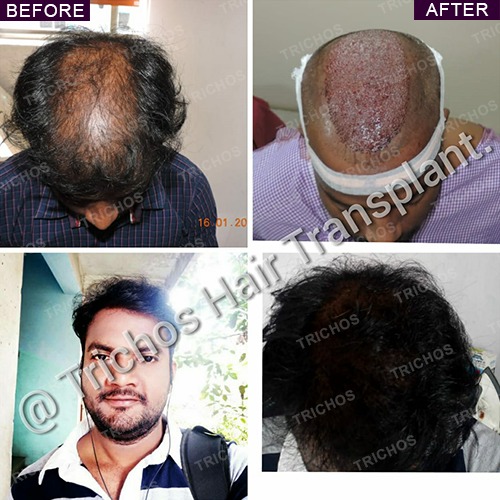Is Hijama Therapy Good for Hair Growth?
Many viewers are confused about the efficacy of the ancient Hijama therapy on hair growth and as a treatment technique to prevent baldness.
In this educational video, noted hair Specialist and hair transplant surgeon in Hyderabad Dr John Watts demystifies Hijama therapy for the lay persons shedding light on this ancient treatment practice.
Known alternatively as “cupping therapy”, Dr John Watts says that he has interacted with patients who had taken recourse to this ancient Greek technique in his introductory note.
“I used to see some patients come to me with reddish patches on their neck. When I enquired, I was told that it is a leftover mark from Hijama therapy,” he says, adding that Hijama therapy has now become ‘advanced’.
In its earlier avatar, Hijama therapy was used with herbs that were burnt in a cup and it was upturned and placed on the body. The resulting vacuum that was created formed the basis of Hijama therapy.
Advanced Hijama Therapy
In modern era, Hijama therapy took an advanced form where air was suctioned out from the inverted cup and special needles was used for letting out bad blood from the body to cure health issues like joint pain, back pain, body pain, acne, facial paralysis, cervical spondylosis and various other conditions.
In this therapy, the inverted cups are placed for 2-4 minutes in a session. However, they left some side effects like reddish skin patches.
“The core principle of Hijama therapy is to remove bad blood, which is said to be responsible for one’s health condition,” explains Dr John.
Scientific basis for Hijama:
In his hunt for research articles on this treatment, Dr John Watts discloses that he did not come across any reputed international journal about that highlighted its efficacy. “I did not find any scientific articles on the concept of bad blood,” he said.
Hijama for Baldness Prevention:
In his educational video, Dr John Watts questions that how the Dihydrotestosterone (DHT) influence can be separated from “bad blood” principle in Hijama therapy to prevent baldness.
“In my interactions with Hijama patients who had used this treatment technique for baldness prevention and hair growth, they told me that there were no visible progress,” he said.
However, they left some side effects like reddish skin patches.
Dr This is a paradox. When most people attempt weight reduction techniques to
Hijama and it’s a very successful treatment method for several types of disorders. In the present time, this treatment method is called Cupping therapy in which an airtight cup is used for treatment. Normally we see that when a person is sick and being treated he is supplied blood but in Hijama therapy we remove blood to treat the patient. By Hijama therapy we can treat many disorders like Migraine, Back pain, Joint pain, Slip disc, etc. Apart from this Hijama therapy we can also treat hair loss and help the regrowth or lost hair. This is a method in which you can see the results in a very short time.
Book an appointment for expert guidance


About
Causes
Alopecia
Restoration
Procedures
Locations
Disclaimer: While hair transplants are generally safe and effective, as with any medical procedure, there can be minimal and temporary side effects based on specific or underlying medical condition of the individual patient. Please consult in person with our qualified medical team at Trichos for a thorough assessment of your specific condition and individualized guidance on the potential risks and benefits associated with our hair restoration treatments.
Learn more about Medical Consent for Surgeries.



